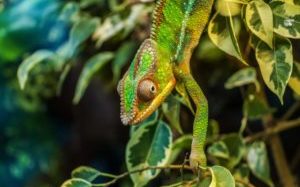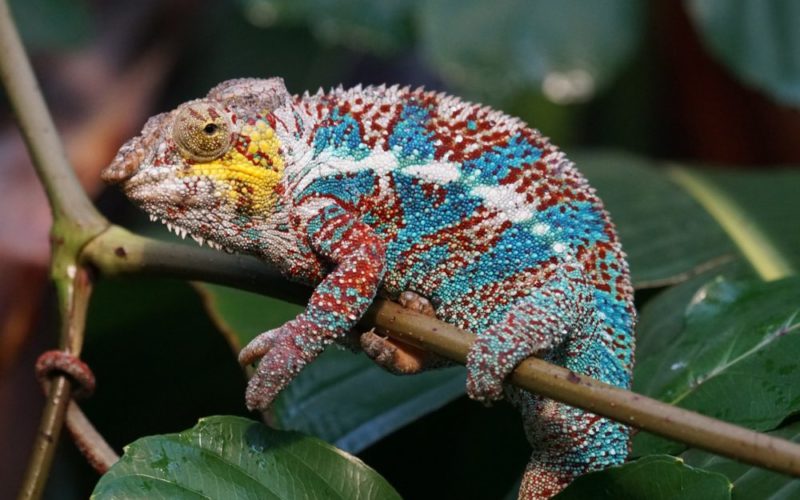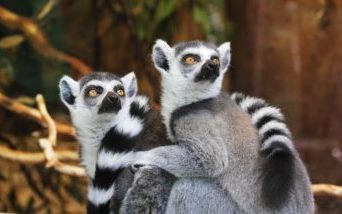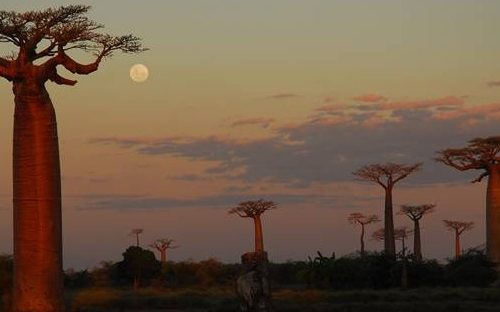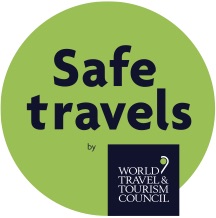Madagascar is the world’s fourth largest island and home to an astounding 5% of the world’s plant and animal species. Most of the weird and wonderful fauna and flora can only be seen in Madagascar. This is a land of warm and friendly people, beautiful beaches and incredible natural wonders.
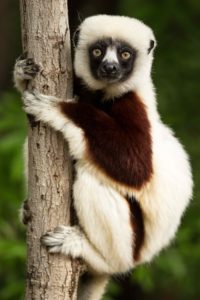
Best Times: The best times to visit are between March and December. Peak season is from August to November.
Typical Activities:
Forest walks in the night and day for wildlife viewing
Beach activities, scuba diving, snorkelling, whale watching and sport fishing
Cultural activities (visiting sacred forests, villages, schools, local markets and artisans)
Why Visit:
- Endemic species: Madagascar is home to 5% of the world’s plant and animal species, 80% of which are endemic to the island. There are many weird and wonderful creatures to discover here including over 100 lemur species, 285 bird species, fossa, over 300 species of reptile, 1,000 orchid species and more.
- Unique culture: Malagasy culture is a unique blend of South East Asian and African cultures that is very far removed from our own European and North American cultures. The heavy emphasis on tradition and ritual is fascinating and an intrinsic part of Malagasy everyday life.
- Fabulous beaches: Nestled between the Indian Ocean and the Mozambique Channel, Madagascar offers a beautiful array of white sand beaches, azure waters and coral reefs. With the fairly underdeveloped tourism sector, if you wander off the beaten track, you will likely have this paradise all to yourself.
- Stunning landscapes: With the unreal beauty of the Tsingy, lush rainforests, otherworldly spiny forests, towering baobabs, white sand beaches, mountains and plains; the red island offers one-of-a-kind landscapes that are a photographer’s dream come true.
- A walking holiday: Wildlife holidays to Africa often involve sitting in a car all day. In Madagascar the majority of your wildlife viewing will be done on foot in the island’s diverse forests, getting you closer to nature. You’ll also come back from holiday feeling fit and energized. Walks range from a gentle stroll through the forest to fairly strenuous hikes through astonishing limestone formations.
- Safety: Madagascar offers a gentle introduction to African wildlife holidays as there are no dangerous animals, insects or reptiles.
- Off the Beaten Track
Main Areas
EAST
Andasibe
Andasibe is a fantastic place to experience Madagascar’s lush endemic rainforest. The highlights are two protected areas, the Perinet Special Reserve and Mantadia National Park. The journey to Andasibe offers first time visitors to Madagascar a gentle introduction to rural life with rice fields, redbrick houses and roadside stalls selling seasonal fruits and vegetables lining the route.
The 810 ha Perinet reserve is one of the best places to see Madagascar’s largest lemur: the Indri. With a barely visible tail, black and white markings and a surprised teddy–bear face, this Lemur is one of the few animals in the world that cannot survive in captivity. Its haunting call can be heard for up to 3km in the forest. There are another 11 species of lemur to spot as you walk through the rainforest. You may find a troop of Grey Bamboo lemurs, Common Brown lemur, Diademed Sifaka. Birdwatchers should look out for the Velvet Asity, Blue Coua and Nuthatch Vanga and many more endemic species. Perinet is home to many reptiles, invertebrates, and some of Madagascar’s over a thousand orchid species.
Mantadia National park comprises virtually untouched primary rainforest and is home to different species than those seen in Perinet. A full day outing is ideal to look for some of the lemur species in this stunning park including the Indri Lemur, Diademed Sifaka, Grey Bamboo Lemur, Red-Bellied Lemur and White Ruffed Lemur. While the trails are slightly more difficult, the rewards are great as the forest is taller, wilder and less crowded than Perinet. There are an abundance of birds including the Scaly Ground Roller, Pitta-Like Ground Roller and Red Breasted Coua. To do justice to Mantadia you need to spend a whole day in the park. This is a naturalist’s goldmine with many seldom seen species of mammals, reptiles and birds.
NORTH
Montagne d’Ambre
Established by the French in 1958, this 18,500 ha volcanic massif and its surrounding forests are now one of the country’s best examples of ecotourism which invites local community participation in planning and management. Thousands of acres of montane rainforest are home to extraordinary plant and animal life. Huge ferns and strangler figs flourish in the forest, while several indigenous species of lemurs, including Sanford’s Lemur and the Crowned Lemur, are also found here. You may even see Ring-Tailed Mongoose and Fossa. Magnificent birdlife includes Crested Ibis, Paradise Flycatcher, Forest Rock Thrush and Ground-Rollers. You may wish to make one of the waterfalls the destination of your trip – as you make your way to one of the three dramatic falls (Cascade Sacré, Cascade d’Antankarana and Cascade d’Antomboka), you will spot the abundant wildlife and incredible flora while learning about the local Malagasy customs from your guide. This is one of the most visitor-friendly of the island’s protected areas with broad trails and a cooler climate.
Ankarana
Ankarana is an island of limestone Tsingy amidst dry deciduous and riverine forest. The limestone massif is penetrated by numerous caves and canyons. Some of the largest caves have collapsed, forming isolated pockets of river-fed forest with their own perfectly protected flora and fauna. The reserve is known for its many lemur species, including Crowned and Sanford’s Brown Lemurs as well as the ever-playful Ring Tailed Lemur. It is also a birdwatcher’s paradise with nearly 100 species. If you are lucky you may even spot Fossa and Tenrec. The Tsingy are sharp limestone formations caused by erosion from acid rain to form otherworldly cathedrals of stone. In addition to the Tsingy and forest, you will want to visit the Lac Vert (a beautiful crater lake), Andrafiabe Cave and Crocodile Cave, home to the world’s only cave-dwelling crocodiles.
Your guide will recommend the best trails to follow depending on your physical aptitude and interests.
Other points of interest include:
- Baobab forest
- Ampondrabe river
- the abyss where the three rivers of Ankarana disappear
- Bat’s cave
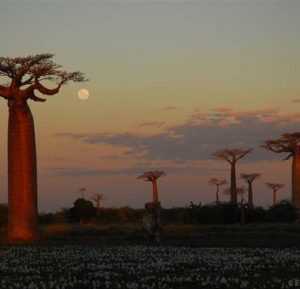
Masoala
The densely forested Masoala Peninsula contains the largest remaining block of protected rainforest in Madagascar and harbours a wealth of rare and unique species including the Red-Ruffed Lemur, seen only in Masoala. The national park covers 240,000 ha of the peninsula as well as three marine areas. This is the wettest place in Madagascar with an annual rainfall exceeding 500cm. The trails can be quite steep and muddy so it is best to visit this area if you are physically fit. The peninsula can only be conveniently accessed by boat across Antongil Bay. This is a wonderful destination for photographers, with golden sandy beaches and lush rainforests. Combine night and day walks through the primary forest and trips up the river in traditional pirogues with beach activities such as snorkelling and guided sea kayaking for a chance to spot Bottlenose Dolphins and Green Turtles. Birdwatchers will relish the opportunity to see the Helmet and Bernier’s Vangas, Scaly Ground-Roller and other rare endemic birds. The very lucky visitor may even be able see the elusive Aye-Aye, surely Madagascar’s strangest lemur species.
Anjajavy
A beach paradise on the Mozambique Chanel, Anjajavy L’Hotel protects 450 ha of dry deciduous forest with unique baobabs and other endemic plants. Wildlife viewing here is effortless, including Coquerel’s Sifakas and other lemurs. There are flocks of bright green Grey-Headed Lovebirds, Sickle-Billed Vangas, Crested Ibises, Crested Couas, Madagascar Fish Eagles and Vasa Parrots. There are a few spectacular caves to visit along with tsingy limestone formations, mangroves, outstanding coral reefs and pristine beaches.
WEST
Tsingy de Bemaraha
This unique site, a forest of 40 – 50 meter high limestone peaks, is classified as a UNESCO World Heritage Site and located about 20km from the village of Bekopaka. This is one of the highlights of any visit to Madagascar.
The Tsingy are razor sharp pinnacles produced by the erosion of limestone massifs over millions of years. Steps, boardwalks, ladders, cables and suspension bridges have been installed with phenomenal expertise to form a pathway allowing tourists to explore the tsingy in safety.
The Tsingy shelters a startling array of wildlife: 11 species of lemur (including Verreaux and Decken’s Sifaka and Red-Fronted Brown Lemurs), 103 species of terrestrial and aquatic birds, 15 species of bats, 22 species of amphibians and a variety of reptiles. Pachypodiums and other strange succulents provide splashes of green amidst the grey limestone.
Head up the Manambolo River in a traditional dugout canoe known as a ‘pirogue’. The river cuts a spectacular gorge through the limestone on the southern boundary of the national park. Visit one of the caves filled with stalactites and stalagmites as well as a few human tombs from Madagascar’s first settlers, the Vazimba (approximately 5th century).
Avenue of the Baobabs – Morondava
The Morondava area was the centre of the Sakalava kingdom and their tombs bear witness to their power and creativity. These elaborately sculpted wooden royal tombs are frequently decorated with well-executed, often erotic, funerary carvings representing life and fertility. Today, Morondava is the centre of a prosperous rice-growing area and a seaside resort with a laid-back atmosphere.
The main attraction is its proximity to the famous Avenue of the Baobabs, a cluster of towering Grandidier’s Baobab, one of Madagascar’s most famous views. The Avenue became a protected natural monument in 2007 and new trees have been planted on the 320 ha reserve. The best time to visit is at sunset.
SOUTH
Ifotaka Community Forest
Ifotaka is a community managed forest reserve protecting 22,000 ha of spiny forest and gallery forest in the remote south of the island. Very few tourists venture here and it is incredibly rewarding to be off the beaten track: you will experience the authentic and wild Madagascar that enchanted early explorers. With two distinctive forest types, 5 species of lemur, including the Verreaux’s Sifaka and Ring-tailed Lemurs, countless birds and reptiles, the wildlife experience here is outstanding.
Walk amongst the octopus trees in the otherworldly landscape of the spiny forest in the early morning to spot the many endemic birds such as Crested Coua, Vangas and Running Coua. Explore sacred forests where the ancestral tombs of the Antandroy tribe are interspersed with 500 year old baobab trees, inquisitive lemurs and an extraordinary array of flora and fauna, unique to the spiny forest. The sacred gallery forest along the Mandrare River is home to large troops of playful Ring-tail lemurs; the forest is accessed by boat from Mandrare River Camp. Night walks are a fantastic way to see diurnal lemurs bedding down, and the nocturnal lemurs begin to wake in the eerie and prehistoric Spiny Forest. You will spot Sifakas and sleeping White-foot Sportive Lemurs, then once the sun has set, two mouse lemur species, sleeping birds, chameleons, owls and now active Sportive lemurs.
The Camp also organizes visits to the colourful local market as well as schools and clinics that they sponsor. Nearby there is a local version of the ‘Avenue of the Baobabs’ where sundowners are served. Watching the sun set and moon rise with a view across the Baobabs to the mountains beyond is a magical experience. In the evening the local village may come to perform beautiful traditional dances, accompanied by singing and music. Song and dance is at the heart of Antandroy culture and is used to accompany the major rituals and events of everyday life.
Manafiafy – Sainte Luce
Manafiafy is a secluded tropical paradise with excellent wildlife viewing and miles of untouched beaches. There are no major tourism developments aside from the charming 5 bedroom Manafiafy Beach & Rainforest Lodge. This is where French colonists first landed in Madagascar in 1638 and life in the local fishing village has stayed very much the same over the centuries. The beautiful and wildlife abundant community managed forests are some of the last remaining stretches of coastal rainforest in southern Madagascar. Manafiafy is also one of the best locations to see hump-back whales in Madagascar during the season (June – November). Bottle-nose dolphins can be spotted from the beach year-round. The Sainte-Luce peninsula is the starting point of a mangrove network spanning 40 km towards Fort Dauphin. The mangrove is intersected by rivers and lakes, with the dramatic peaks of the Anosy mountain range in the background.
Isalo National Park & Zombitse National Park
Isalo National Park
The combination of sandstone rocks cut by deep canyons and eroded into spectacular shapes and rare endemic plants, makes Isalo one of Madagascar’s most appreciated parks. For botanists there are Pachypodium plants and locally endemic Aloe; and for lemur lovers there are Sifakas, Brown Lemurs and Ring Tails. Isalo is also sacred to the Bara tribe; for hundreds of years they have used caves in the canyon walls as burial sites. A full day of guided walking in the park will allow you to explore one of Madagascar’s most diverse parks. Very different to the lush tropical vegetation in the east, Isalo’s attraction is its vast rolling plains interspersed with stunning rock formations. Wildlife is not as dense as in other parks but look out for Ring-Tailed Lemurs, Brown Lemurs, Sifakas and 14 nocturnal lemur species hiding in dense vegetation along the streams. There are also 80 species of bird (including the rare Benson’s Rock-Thrush, the Knob-Billed Duck or the Crested Ibis), 35 species of reptiles and several endemic frogs. Your guide will offer you a variety of possible trails depending on your interests and physical abilities. A popular trail is the ‘Canyon des Singes’ which winds through the dense foliage of the forest and brilliantly colored rock formations to reach a stunning rock pool known as the ‘piscine naturelle’.
Zombitse National Park
Zombitse National Park is a 36,300 hectare transition forest between the western and the southern habitat types, rich in biodiversity. The park is outstanding for birdwatchers as it offers the chance to glimpse one of Madagascar’s rarest endemics, Appert’s Greenbul, whichis donfined to this forest. Other bird species include the Giant Coua and Crested Coua.
Tuléar / Ifaty
Reniala Private Reserve which is a small 45 ha protected area, managed by an environmental association called Reniala (meaning baobab in Malagasy) that is trying to develop eco-tourism in the area. The reserve is located less than 1km from the Mozambique Channel near the village of Ifaty-Mangily. An early morning visit guarantees sightings of the Long-Tailed Ground Roller and Subdesert Mesite, two endemic species. The towering spiny forest is home to more than 2,000 plant species (many of them locally endemic), some spectacular and very old baobabs (there is a giant baobab of 12,5 m diameter) and a completely endemic plant family, the Didieraceae. Reniala includes a botanical trail and a bird sanctuary.
Ifaty is also a beach destination with a number of diving and snorkeling excursions as well as kite surfing and boat trips.
ISLANDS
Nosy Be
Nosy Be is Madagascar’s most popular beach resort. Located in the Mozambique Chanel, the island’s best beaches are on the western coast. The name means ‘big island’ and the climate is nearly perfect all year. The largest town is Hell-Ville named after the French colonial governor of Reunion, Admiral de Hell. While the beaches are stunningly beautiful, snorkelling and scuba diving are best undertaken on the other islets of the Nosy Be archipelago. A variety of yacht charters are available through your hotel to take you diving or snorkelling off the nearby islands. Turtles and dolphins can be seen year-round and humpback wales visit annually between mid-August and October. Deep sea-fishing, jet-skiing, windsurfing, water-skiing, kayaking and horse-riding are also available. An international golf course opened on the island in 2014.
Nosy Komba
Nosy Komba is a small island nestled between Nosy Be and the mainland in the Mozambique Chanel. It is known for its population of black lemurs, lively local crafts market and stunning beaches. This volcanic island is covered with lush rainforest, home to the Macacoa lemur species and an abundance of chameleons, butterflies, tropical flowers and more. The beaches are white sand that flows into emerald waters. Snorkelling, scuba diving and boating excursions offer encounters with turtles, dolphins and hump-back whales (July-November).
Ile Sainte Marie
Ile Sainte Marie (Nosy Boraha), is a luxuriant island off the eastern coast of Madagascar. The best times to visit are June and mid-August through December. It is an excellent spot for whale watching from July through October. Humpback whales visit the island’s shores yearly to have their young. This is a real tropical island experience with endless deserted beaches overhung by coconut palms, bays protected by vibrant coral reefs and lush vegetation. The island was a major pirate hideout in the 18th century and was the first part of Madagascar to fall under French rule in 1750. There is even a pirate cemetery with gravestones dating back to the 1830’s.
Nosy Ankao – Miavana Private Island
Miavana Private Island, designed by the creators of North Island in the Seychelles, will open in December 2016. Miavana is located on a private island, Nosy Ankao, off the north-eastern coast of Madagascar. With just 14 exclusive villas, untouched white sand beaches and world-class marine biodiversity, visiting Miavana is an outstanding way to experience the Indian Ocean.
Architects Silvio Rech and Lesley Carstens have designed Miavana, meaning ‘to reconcile’, blending barefoot beach luxury and historic European renaissance. Celebrating diversity, the natural elements of water, sand and air merge elegantly with luxurious interiors and textures unique to Madagascar.
The island is surrounded by a pristine reef offering superb snorkelling and diving opportunities, as well as whale and dolphin watching, deep-sea fishing beyond the reef, jet skiing, kite surfing, helicopter flights, and more. The resort’s “blue safari” comprehensive guided water activities provide fascinating insights into the surrounding ecosystem as guests explore the aquamarine bays, beaches, lagoons, and channels of the archipelago.
Activities include: Blue safaris, Lemur trekking, scuba diving, fly fishing, whale / turtle watching, spa and kite-surfing.
Mitiso Islands
The Mitsio archipelago lies some 50km from Nosy Be, accessible only by boat. This is the Maldives of Madagascar with world class diving and outstanding beaches. One of the islands, Nosy Tsarabanjina, meaning ‘good-looking’, is made up of red, grey and black volcanic rocks with lush green vegetation clinging to them, including baobabs and pachypodium. The highlight of the island is its crystal clear waters, white sand beaches and abundant marine life.
 English
English Deutsch
Deutsch
